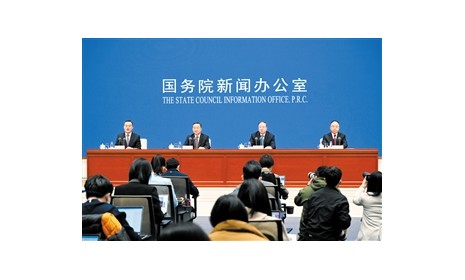原文报道:
Following a request from the European Commission, the Panel on Food Additives and Nutrient Sources added to Food (ANS) was asked to deliver a scientific opinion on the safety of Ferrous Ammonium Phosphate (FAP) when added for nutritional purposes in foodstuffs for particular nutritional uses (PARNUTS) and foods intended for the general population (including food supplements) as a source of iron and on the bioavailability of iron from this source.
The present opinion deals with the safety of FAP when added for nutritional purposes in PARNUTS and foods intended for the general population (including food supplements) as a source of iron and on the bioavailability of iron from this source. The safety of iron itself in terms of amounts that may be consumed is outside the remit of this Panel.
FAP is an inorganic salt with iron(II), ammonium and phosphate ions in a 1:1:1 molar ratio. The content of iron(II) is 22-30% (w/w).
The Panel notes that the representative commercial FAP product stability study for 19 and 36 months storage under the recommended conditions did not adequately confirm the stability of ferrous ion against oxidation.
From the stability studies in food and one in vitro solubility study under conditions mimicking the conditions in infant and adult stomachs, it can be deduced that FAP is stable at neutral pH in formulated foods but readily dissociates under the low pH conditions of the stomach, thus releasing the bioavailable ferrous ion.
The Panel reviewed a randomised double-blind, crossover human bioavailability study of iron from FAP. The bioavailability of iron from FAP was shown to be within the range of that from other iron salts used for fortification purposes, and specifically, less than that from ferrous sulphate and greater than that from ferric pyrophosphate.
The Panel notes that FAP is intended for use as a direct replacement for currently permitted iron forms in all PARNUTS food categories, with the exception of baby foods and infant formulae. The petitioner also proposed the use of FAP as a source of iron in fortified foods. The proposed conditions of use of FAP in intended food categories provides between 0.7 and 8.2 mg of iron per serving, which corresponds to between 5 and 58.6% of the Recommended Daily Amount (RDA) for iron in adults. FAP is also intended for use in food supplements as a direct replacement for other permitted sources of iron. One daily serving of FAP will not exceed the RDA for iron of 14 mg.
The Panel calculated the total dietary intake of iron, phosphorus and ammonia from the consumption of food categories fortified with FAP and from other dietary sources in European countries. The Panel assumed a daily intake of a beverage serving and a serving of solid food both fortified with FAP at the maximum proposed use levels for beverages (27.2 mg FAP per serving) and solid foods (14 mg FAP per serving) provided by the petitioner in the technical dossier.
The additional exposure to 12.4 mg iron/day from FAP (assuming 30% of iron content in a serving fortified with 41.2 mg FAP) would result in an anticipated total average exposure to iron ranging from 20.8 to 31.4 mg/day and at the high percentile in an anticipated exposure ranging from 25.2 to 43.3 mg/day for adults and an anticipated total average exposure ranging from 17.9 to 28.2 mg/day and at the high percentile in an anticipated exposure ranging from 20.7 to 39.4 mg/day for children. The Panel notes that the use levels of FAP proposed by the petitioner will provide 12 mg iron/day, which is below the guidance value for supplemental intake of iron of 17 mg/day recommended by the Expert Group on Vitamins and Minerals (EVM) in 2003. The proposed total exposure will not exceed the Provisional Maximum Tolerable Daily Intake (PMTDI) for iron established by Joint FAO/WHO Expert Committee on Food Additives (JECFA) in 1993, even in high consumers.
The Panel notes that an additional exposure to 22.7 mg phosphorus/day (assuming 55% of phosphorus content in a serving fortified with 41.2 mg FAP) would result in an anticipated total average exposure ranging from 1037.7 to 1838.7 mg/day and at the high percentile in an anticipated exposure ranging from 1525.7 to 2731.7 mg/day for adults and an anticipated total average exposure ranging from 942.7 to 1540.7 mg/day and at the high percentile in an anticipated exposure ranging from 1353.7 to 2593.7 mg/day for children. These amounts of phosphate do not exceed the
Tolerable Upper Intake Levels (ULs) defined by the Institute of Medicine (IOM) in 1997.
The intake of 3.7 mg ammonia/day from FAP (assuming 9% of ammonia content in a serving fortified at 41.2 mg FAP) seems negligible compared to its endogenous production levels of 3000 mg/day in the colon.
Studies evaluating the toxicity of FAP in experimental animals have not been conducted. In the study on the bioavailability of iron from FAP in humans, no gastrointestinal complaints or other adverse effects were reported following consumption of two servings of a milk product fortified with FAP, providing a total iron dose of 5 mg.
FAP dissociates at low pH to its respective ferrous, ammonium and phosphate ions. Given the previous evaluations of ferrous, ammonium and phosphate salts as food additives and as nutrient sources by the Scientific Committee on Food (SCF), EFSA and JECFA and that the available information on their toxicity did not identify toxicological effects, the Panel considers that additional toxicological data on FAP are not required.
The Panel notes that, at the proposed use levels, the corresponding exposure to iron from FAP does not exceed the guidance value for supplemental intake of iron of 17 mg /day recommended by the EVM. Likewise, the corresponding exposure to phosphorus from FAP does not exceed the ULs defined by the IOM and the ammonia exposure is negligible compared to its endogenous production level.
Therefore, the Panel concludes that the use of FAP as a source of iron in PARNUTS and in foods intended for the general population (including food supplements), at the proposed use levels, is not of safety concern provided that established upper safety limits for iron are not exceeded.
详情见:http://www.efsa.europa.eu/en/scdocs/scdoc/1584.htm
日期:2010-05-06
















